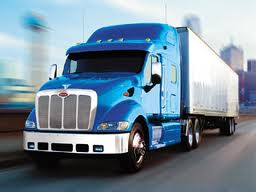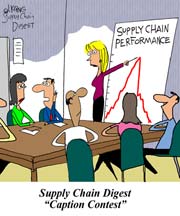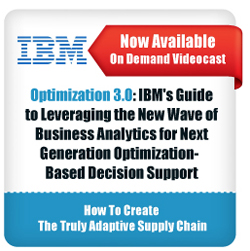The One Best Supply Chain Metric
SCDigest editor Dan Gilmore is on vacation this week. For just the third time ever, he is turning the First Thoughts column to someone else, in this case David Schneider, former logistics executive and now head of David K. Schneider & Associates. His column complements last week's Supply Chain Finance 101 The Movie.
| GILMORE SAYS: |
"How much cash did your supply chain create this year? Did it create more cash than last year? How can you know?"
WHAT DO YOU SAY?
Send us your
feedback here
|
"Say, do you test positive for OCF?" The line started out as my cheeky conversation starter at trade shows. I found it stops people in their tracks and makes them wonder if there is something wrong with them. Having never heard the term OCF, about half will take the bait and ask, "What is OCF?"
"Operating Cash Flow is the cash money a company generates from the operations of the business," is what I answer. "Arguably, a better measure of the business' success than earnings, because a company can show positive net earnings and still lose cash money. Businesses use operating cash flow to pay bills and reinvest in inventory, make capital investments, eventually leveraging those assets into greater cash when the customer pays for the goods. Operating cash flow is the air a company breathes."
I find that after that, many supply chain tacticians just don't get it. They are basic operators, running floor operations or transportation operations. Their focus is on local optics and optima - how to improve productivity in the four walls of their warehouse, or how to get that extra dime a mile out of the trucker. These people trip over strategy like a root growing in the middle of the path as they look for the next measure of execution effectiveness.
I am not knocking the executioners. We have to have the strong disciplined operators that focus on the flawless execution of tactics. Simply put, these are people that I love to teach, but are not in the position to hire me. The rare individual looking for something better than efficiency is who stops to have a conversation and engage a new concept of measurement.
If you are not interested in a strategic measurement, read no further. What follows will challenge the thinking of most Supply Chain managers. If you really want to propel your supply chain to break out of marginal improvements to make explosive improvements, then you may have the strategic interest to read on.
The Sea Of Numbers
In the sea of numbers that we supply chain managers use for performance metrics, there is great confusion about what works and what is meaningless. I hear this from my clients. Managers at the WERC roundtables this spring voiced the same issues. Many managers don't understand the meaning of the measures they are forced to use or where they as managers have an impact on the measures. They understand how to measure, but are lost for a meaning. They do not see where the effort to measure actually returns value.
Like management guru Peter Drucker, I adore inherent simplicity. According to the gospel, my measurements as a manager should look up to the measurements my boss uses, should be simple, actionable, and easy to report. The measurements should measure things that I control that clearly contribute to the success of the organization.
Give me a measure that the best leaders use and tell me how my efforts contribute to improving what they measure.
I think the supply chain is overlooking the power of OCF as an overall health measure.
 What is your Goal? What is your Goal?
What is the mission and purpose of your organization? For most companies, increasing "shareholder value," is a key part of the mission, whether public or private companies.
But how is shareholder value measured? What control does supply chain have over it?
Listening to many managers in business, clients and potential clients I speak with, it is clear they are confused on these topics. To me, that says that we have lost sight of our goals. To help clear this up, let's agree to a simple universal goal: Create sufficient profits that assures the sustained growth of the enterprise.
Profit is Theory, Cash is Fact
Part of what makes all this a bit confusing is the concept that profits and earnings are nothing more than an opinion, a theory. With accrual accounting methods virtually all companies use, profit is in a sense subjective. An enterprise can be profitable or unprofitable depending on the rules applied. We see this when companies report GAAP and non-GAAP earnings statements. Companies can recognize revenue before they actually receive the cash, which is why wholesale distributors watch accounts receivable closely. Companies can recognize an expense long after the cash is spent, which you see with any capital investment that is depreciated over time.
How much profit a company actually makes is subject to the application of different rules and adjustments. Accounting gets creative, perfectly legal, and perfectly confusing.
That is why a business can't spend profit to buy inventory, or to pay employees. Businesses pay for these goods and services with cash. Cash, and the credit that feeds it, is the real measure of the health of a company. A company can be profitable, but starved for cash. Without cash, businesses fail.
Three Kinds of Cash
An enterprise can get cash from three different sources: it can generate cash from operations, get people to invest cash, or borrow cash from the bank. All three are streams of cash flow.
When credit dried up in 2008 one important source of cash for many businesses disappeared. Companies that thrived in the downturn did so with cash reserves built from strong and sustained Operating Cash Flow. From our research, the companies that survived learned quickly about measuring and improving OCF. The ones that thrived already measured OCF, and their cultures focused on OCF.
How much OCF does your Supply Chain Produce?
How much cash did your supply chain create this year? Did it create more cash than last year? How can you know? We explored these and other questions about KPIs that work and don't work at two WERC roundtables in May. The KPI roundtable attendees had difficulty answering those questions. It is no surprise, since most companies focus and report earnings, not the operating cash flow.
Many managers claim they have P&L responsibility, a claim made in many supply chain manager resumes. It is a mistake to do so, because few supply chain managers have direct control of both the top and bottom of the income statement. Rare is the supply chain manager that directly controls the income statement and the asset side of the balance sheet. The measurements that a manager sees and is managed by depends on the role that manager plays in the supply chain.
Most managers only see a small sliver of the total financial picture of the company. By corporate design they are limited by the optics presented to them in the financial statements, and the local optima the managers are measured by. This compartmentalization of financial reporting follows the operational silos that the managers work, and limits the meaningful contribution a single manager can make to the organization.
The typical distribution or logistics manager is directly responsible for is the expense schedule, the bottom side of the income statement. Expenses control is one method to improve profitability, within limits, therefore is the typical way a logistics manager is measured using expense to revenue ratios. Expenses are the lens; the optics a company uses to measure distribution performance. The company may use other metrics, such as order quality, on-time performance, or inventory accuracy, but these measures are secondary to the cost performance of the operations.
The typical local optics for the inventory manager is the inventory asset level on the balance sheet. Most companies measure inventory turnover, a ratio of annual sales divided by inventory. At the same time companies hold inventory managers to the optics of in-stock service level. If these managers buy the wrong product, or don't keep sufficient stock to meet demand, sales will decline.
Supply chain management affects both the income statement and the balance sheet. The combination shows up on the Cash Flow Statement. The resulting costs of the operations and the working capital invested in inventory are hard to see on the income statement or the balance sheet. The operations costs appear on the income statement while the inventory asset appears on the balance sheet.
The combined effectiveness of any supply chain appears on the Statement of Cash Flows, under the heading of Operating Cash Flow.
There are many ways the supply chain can impact cash flow: lower operating costs, reduced inventories, better in stock performance that leads to higher sales, perfect order performance that doesn't lead to delays in payments from customers and more. And yes there are tradeoffs.
That is why using OCF as the leading supply chain metric is so smart. It forces a supply chain, within the constraints of company strategies, to manage these tradeoffs and focus its efforts in a way that generates the maximum amount of cash for the company.
And that change can simply transform a supply chain.
|












